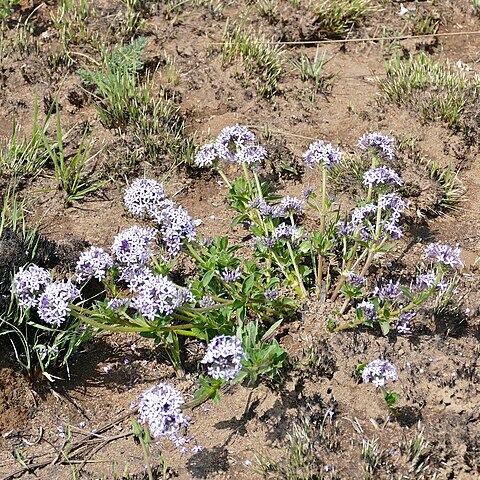Leaf blades 1.3–8.5 x 0.2–3.5 cm., oblong-elliptic or ovate to almost round, acute or subobtuse at the apex, rounded to subcordate at the base, mostly pubescent to densely villous, less often glabrous; petiole obsolete; stipules with ± 5 narrow segments, 3–7 x 0.3–2.5 mm., from a short base to 3 mm. long.
Erect or semi-prostrate to completely prostrate herb 7–60 cm. tall, with mostly numerous hairy or glabrous stems from a thick woody rootstock up to 1 cm. wide.
Corolla bright blue; tube 1.1–1.8 cm. long, 1–1.5(2) mm. wide at the apex, pubescent outside; lobes 2.5–5 x 1–2.5 mm.; throat densely hairy.
Fruit black, 2.5–4.5 x 2–3.3 mm., obcordate, laterally compressed, composed of 2 indehiscent cocci which eventually separate, pubescent.
Calyx tube c. 1 x 0.8–1 mm., pubescent; lobes unequal, 1–2 larger and foliaceous, 0.3–1.2 cm. x 0.5–1.5(2) mm. the rest small.
Inflorescence capitate, ± villous, branched, or spicate below, up to 7 x 4 cm.; peduncle 3.5–34 cm. long, often densely hairy.
Style in long-styled flowers exserted 2–3 mm.; stigma 2-fid, the lobes filiform, 1–1.5 mm. long.
Seeds brown, almost round in outline, 2.5 x 2 mm., thin.

